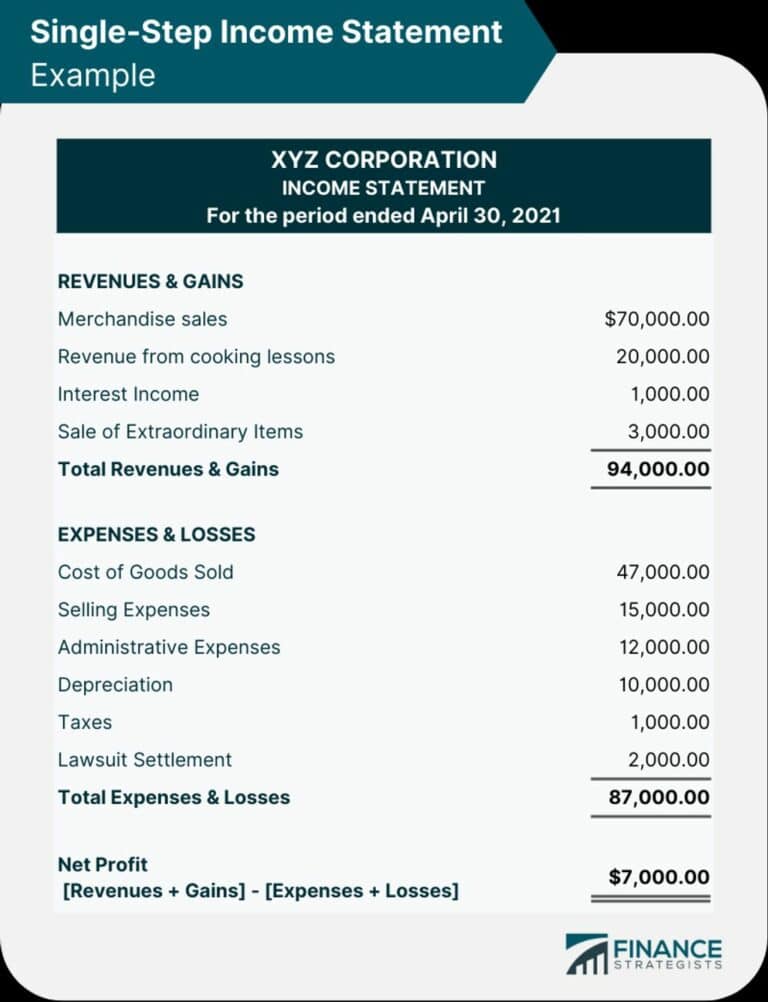Contrast Between Employee Benefits Available for Small Nonprofits and Larger Organizations
Disclaimer: This post may contain affiliate links. These links, if used and purchases made, we may earn a small commission. These affiliate programs do not impact the recommendations we make or the resources we refer you to. Our focus is on providing you the best resources for your nonprofit journey.
Nonprofit organizations in the U.S. play a crucial role in society by providing services that benefit the public good. While there is a wide range of nonprofits, the majority are small organizations with limited budgets and resources. This article explores the contrast between employee benefits available for small nonprofits and larger organizations, highlighting the unique challenges faced by small nonprofits and the strategies they use to attract and retain talent. Key takeaways from this article include:Key Takeaways
- Small nonprofits face challenges such as limited budgets and resources, making it difficult to provide comprehensive employee benefits.
- Larger organizations offer more extensive benefits, including comprehensive health insurance coverage, retirement plans, and paid time off.
- Small nonprofits can provide unique benefits such as flexible work schedules, professional development opportunities, and work-life balance initiatives.
- To attract and retain talent, small nonprofits should consider offering competitive salaries, emphasizing their mission and impact, and creating a positive work culture.
Understanding the Needs of Small Nonprofits

Challenges Faced by Small Nonprofits
Small nonprofits often face limited budgets and resources, which can make it challenging to provide comprehensive employee benefits. Unlike larger organizations, small nonprofits may not have the financial capacity to offer extensive health insurance coverage or retirement plans with investment options. This can put them at a disadvantage when it comes to attracting and retaining talented employees. However, despite these challenges, small nonprofits recognize the importance of employee benefits in creating a positive work culture and supporting their mission. They strive to find creative solutions such as flexible work schedules, professional development opportunities, and work-life balance initiatives to meet the needs of their employees.
Limited Budgets and Resources
Limited budgets and resources are common challenges faced by small nonprofits. Unlike larger organizations, small nonprofits often have limited funding and fewer staff members to carry out their mission. This can make it difficult to provide competitive employee benefits that attract and retain top talent. However, small nonprofits can still prioritize employee benefits by focusing on creative solutions and leveraging their unique strengths.
One approach is to offer flexible work schedules, which can be a valuable perk for employees who value work-life balance. By allowing employees to have more control over their work hours, small nonprofits can accommodate individual needs and preferences. This can lead to increased job satisfaction and productivity.
Another important employee benefit for small nonprofits is professional development opportunities. Despite limited resources, small nonprofits can invest in training and skill-building programs to help employees grow and advance in their careers. This not only benefits the individual employees but also strengthens the organization as a whole.
Lastly, small nonprofits can prioritize work-life balance initiatives to support their employees’ well-being. This can include implementing policies such as flexible leave options, wellness programs, and supportive work environments. By promoting a healthy work-life balance, small nonprofits can create a positive and supportive culture that attracts and retains talented individuals.
Importance of Employee Benefits for Small Nonprofits
Employee benefits packages play a big role in attracting and retaining top talent. According to Forbes, 10% of workers say they’d take a pay cut to get access to better benefits. This highlights the significance of offering competitive employee benefits for small nonprofits. While the mission of the organization may be a strong motivator for employees, competitive pay and benefits are essential for recruitment and retention. In fact, around 78.4 percent of organizations reported that increasing pay and benefits was a recruitment measure they were planning to introduce or had already implemented in 2021.
To ensure that small nonprofits can compete with larger organizations, it’s important to offer a comprehensive benefits package that meets the needs of employees. This includes providing healthcare coverage, retirement plans, and paid time off. Additionally, small nonprofits can differentiate themselves by offering flexible work schedules, professional development opportunities, and work-life balance initiatives. By prioritizing employee benefits, small nonprofits can attract and retain top talent, ultimately contributing to the success of the organization.
Employee Benefits in Larger Organizations

Comprehensive Health Insurance Coverage
Comprehensive health insurance coverage is a crucial benefit provided by larger organizations. It ensures that employees have access to a wide range of medical services and treatments. With comprehensive coverage, employees can receive preventive care, such as regular check-ups and vaccinations, as well as more specialized care for chronic conditions or emergencies.
In addition to basic medical services, comprehensive health insurance often includes coverage for prescription medications, mental health services, and dental and vision care. This ensures that employees have access to the care they need to maintain their overall well-being.
One important aspect of comprehensive health insurance coverage is the ability for employers to contribute varying amounts toward employee medical insurance. This allows for greater customization and flexibility, as employers can tailor their contributions based on the needs and preferences of their workforce. By offering different contribution levels, employers can provide more affordable options for employees while still ensuring adequate coverage.
It’s important for employees to understand the details of their health insurance coverage, including any deductibles, co-pays, or limitations. This information should be clearly communicated to employees during the onboarding process and regularly reviewed to ensure that employees are aware of their benefits and how to access them.
In summary, comprehensive health insurance coverage is a valuable employee benefit that larger organizations provide. It offers a wide range of medical services and treatments, including preventive care and specialized treatments. The ability for employers to contribute varying amounts toward employee medical insurance allows for greater customization and flexibility.
Retirement Plans and Investment Options
Retirement plans and investment options are crucial for employees to secure their financial future. In larger organizations, employees often have access to comprehensive retirement plans such as 401(k) or 403(b). These plans provide a way for employees to save for retirement through pre-tax contributions and potential employer matching. The key difference between a 401(k) and a 403(b) lies in the eligibility requirements and the types of organizations that can offer them.
In a 401(k) plan, employees of for-profit organizations can participate, while a 403(b) plan is specifically designed for employees of tax-exempt nonprofit organizations. Both plans offer tax advantages and investment options, allowing employees to grow their retirement savings over time.
It’s important for employees to understand the benefits and differences between these retirement plans to make informed decisions about their financial future. Employers can play a crucial role in educating their employees about these options and providing resources to help them make the most of their retirement savings.
Paid Time Off and Flexible Work Arrangements
Paid time off and flexible work arrangements are essential employee benefits in larger organizations. These benefits provide employees with the flexibility to manage their personal and professional lives effectively. Paid time off allows employees to take time away from work for vacations, personal appointments, or family obligations without sacrificing their income. It promotes work-life balance and helps employees recharge and rejuvenate. Flexible work arrangements, such as flex time and alternative work schedules, give employees the freedom to choose when and where they work. This flexibility enables employees to better manage their time and responsibilities, resulting in increased productivity and job satisfaction.
In addition to these benefits, larger organizations often offer other perks to enhance work-life balance. For example, seasonal hours or longer lunch breaks can provide employees with additional time for personal activities. Childcare options are also important for helping employees achieve a positive work-life balance, especially for working parents. On-site childcare facilities can be a valuable benefit, as they provide convenience and peace of mind for employees.
To attract and retain top talent, larger organizations understand the importance of providing comprehensive employee benefits. Paid time off and flexible work arrangements are key components of these benefits, as they contribute to employee satisfaction, engagement, and overall well-being.
Unique Employee Benefits for Small Nonprofits

Flexible Work Schedules
Flexible work schedules are a valuable benefit that small nonprofits can offer to their employees. By allowing employees to have control over their work hours, organizations can help them achieve a better work-life balance. This is especially important for employees who have personal commitments or responsibilities outside of work. For example, parents with young children may want to adjust their schedules to be able to pick up their kids from school or spend more time with them in the afternoon. Similarly, employees who are more productive at different hours, such as night owls, can design their work schedule to fit their personal preferences. By accommodating these individual needs, small nonprofits can create a supportive and flexible work environment.
One approach to flexible work schedules is implementing alternative working schedules. This allows employees to work longer hours on fewer days, giving them more consecutive days off. For instance, instead of working five 8-hour days, employees can work four 10-hour days. This arrangement provides employees with an extended weekend, giving them more time for personal pursuits and relaxation. Another option is allowing employees to work nine hours on certain days, which can result in having every other Friday off. These alternative schedules not only provide employees with more time for themselves but can also boost productivity during the hours they are in the office.
In addition to alternative working schedules, flex time is another way to support work-life balance. With flex time, employees are required to be present in the office on certain days or for a specific number of base hours. However, they have the flexibility to determine the rest of their schedule. This allows employees to tailor their work hours to their personal needs and commitments. For example, parents may choose to start work early to be able to pick up their children from school and spend quality time with them. Flex time also benefits employees who are more productive during non-traditional working hours, allowing them to optimize their performance.
Implementing flexible work schedules requires open communication and trust between employers and employees. It is important for organizations to establish clear guidelines and expectations to ensure that work responsibilities are met while still allowing for flexibility. By offering flexible work schedules, small nonprofits can attract and retain talented individuals who value work-life balance and seek a supportive work environment.
Professional Development Opportunities
Professional development opportunities are crucial for the growth and success of employees in small nonprofits. These opportunities provide individuals with the chance to enhance their skills, expand their knowledge, and stay updated with the latest trends and best practices in their field. Small grants, like the Professional Development Microgrants offered by the Spur Community Foundation, can be a valuable resource for nonprofits looking to invest in their employees’ development. These grants support nonprofits in pursuing and participating in professional development opportunities. By investing in professional development, nonprofits can empower their employees to excel in their roles and contribute to the organization’s mission.
Work-Life Balance Initiatives
Work-life balance is a crucial aspect of employee well-being and satisfaction. Small nonprofits understand the importance of providing initiatives that promote work-life balance for their employees. One effective initiative is offering flexible work schedules, allowing employees to have more control over their time. This can include options like compressed workweeks or telecommuting, which can greatly reduce commuting time and increase productivity.
Another initiative is providing professional development opportunities. Small nonprofits can offer training programs, workshops, or conferences that allow employees to enhance their skills and knowledge. This not only benefits the employees but also contributes to the growth and success of the organization.
Additionally, work-life balance initiatives can include implementing work-life balance policies and practices. This can involve setting clear boundaries between work and personal life, encouraging employees to take breaks and vacations, and promoting a healthy work environment.
By prioritizing work-life balance initiatives, small nonprofits can create a supportive and fulfilling work environment that attracts and retains talented individuals who are passionate about the organization’s mission and impact.
Attracting and Retaining Talent in Small Nonprofits

Competitive Salaries and Performance-Based Incentives
Competitive salaries and performance-based incentives are crucial for attracting and retaining top talent in small nonprofits. While the mission and impact of the organization may be a strong motivating factor for employees, it is important to offer competitive pay to ensure that they feel valued and appreciated.
In addition to competitive salaries, performance-based incentives can further motivate employees to excel in their roles. These incentives can take the form of bonuses tied to achieving organizational milestones or objectives, or rewards for securing new grants or donations.
Creating a positive work culture is also essential for attracting and retaining talent. This includes fostering a supportive and inclusive environment where employees feel empowered and motivated to contribute to the organization’s mission.
To summarize, offering competitive salaries and performance-based incentives, along with creating a positive work culture, are key strategies for attracting and retaining talent in small nonprofits.
Emphasis on Mission and Impact
When it comes to attracting and retaining talent in small nonprofits, emphasizing the mission and impact of the organization is crucial. Employees in small nonprofits are often driven by a strong sense of purpose and a desire to make a difference in the world. By highlighting the meaningful work that they will be a part of, small nonprofits can attract individuals who are passionate about the cause.
One important tip for small nonprofits is to prioritize the well-being of your constituents. This means putting the needs of the people you serve at the forefront of your decision-making process. By focusing on the impact that your organization can have on the lives of others, you can create a sense of purpose and fulfillment for your employees.
Another important aspect of emphasizing mission and impact is to choose impact over dollars. While financial stability is important for any organization, small nonprofits may not always be able to offer the highest salaries. However, by highlighting the meaningful work and the difference that employees can make, small nonprofits can attract individuals who are motivated by more than just money.
Finally, it is important for small nonprofits to avoid letting donors set organizational priorities. While donors play a crucial role in funding the organization, it is important to stay true to the mission and values of the organization. By staying focused on the impact that the organization can have, small nonprofits can attract employees who are aligned with the mission and are committed to making a difference.
Creating a Positive Work Culture
Creating a positive work culture is essential for small nonprofits to attract and retain talented employees. A positive work culture fosters a sense of belonging and engagement, which can lead to increased productivity and job satisfaction. Here are some strategies that small nonprofits can implement to create a positive work culture:
-
Promote Work-Life Balance: Small nonprofits can support their employees in achieving a better work-life balance by offering them access to well-being tools. Whether it’s through digital mental health solutions or apps for meditation and relaxation techniques, providing resources for managing stress and improving mental well-being can greatly contribute to a positive work culture.
-
Implement Flexible Work Arrangements: Offering flexible work schedules and remote work options can give employees more control over their work-life balance. This flexibility allows them to better manage personal commitments and reduces stress associated with commuting.
-
Encourage Professional Development: Providing opportunities for professional growth and development shows employees that their career progression is valued. Small nonprofits can offer training programs, workshops, or mentorship opportunities to help employees enhance their skills and knowledge.
-
Emphasize Collaboration and Teamwork: Creating a collaborative work environment where employees feel supported and encouraged to work together can foster a positive work culture. Encouraging open communication, teamwork, and recognizing individual contributions can boost morale and create a sense of camaraderie.
-
Recognize and Appreciate Employees: Recognizing and appreciating employees’ efforts and achievements is crucial for building a positive work culture. Small nonprofits can implement employee recognition programs, celebrate milestones, and provide regular feedback to show employees that their contributions are valued.
By implementing these strategies, small nonprofits can cultivate a positive work culture that attracts and retains talented individuals who are passionate about the organization’s mission and impact.
Frequently Asked Questions
What are the challenges faced by small nonprofits?
Small nonprofits often face limited budgets and resources, making it difficult to provide competitive employee benefits.
What employee benefits are available in larger organizations?
Larger organizations typically offer comprehensive health insurance coverage, retirement plans, and paid time off.
What are some unique employee benefits for small nonprofits?
Small nonprofits may offer flexible work schedules, professional development opportunities, and work-life balance initiatives.
How can small nonprofits attract and retain talent?
Small nonprofits can offer competitive salaries, emphasize their mission and impact, and create a positive work culture.
Are nonprofit employees motivated solely by their salaries?
No, nonprofit employees are often motivated by the mission of their organizations, but competitive pay is still important for recruitment and retention.
What are the benefits of using a Professional Employer Organization (PEO)?
Using a PEO can provide small nonprofits with access to Fortune 500-level benefits, improved administrative functions, and business growth opportunities.







